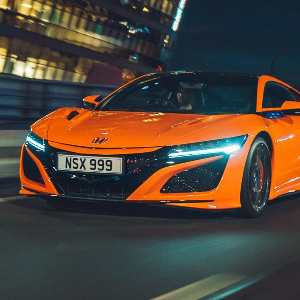
The 2021 Toyota Hilux pickup aims to broaden its appeal with improved road manners while retaining its workhorse durability. Has it succeeded?
If you ever find yourself in the Middle East or on the African continent there are two things you are guaranteed to see a lot of: sunshine and the Toyota Hilux. The Hilux can also be spotted regularly in the upper reaches of frozen Europe, and in South America they’re only slightly outnumbered by mosquitos. You’ll also find the Hilux in lesser numbers at farmer’s markets in Shropshire and building sites in Canary Wharf. However, if you go pickup-spotting in gym carparks and inner city shopping centres, while you’ll find plenty there, they are more likely to be made by Ford, Volkswagen and Nissan.
This is because they are deemed more appealing to the ‘lifestyle’ customer. Lifestyle: a wishy washy term used to describe the growing number of customers who buy a pickup not because their livelihood depends on one, but because they like them. Pickups are cool, let’s be honest, and these days wagons like the Ford Ranger and Nissan Navara have cabins which put many SUVs to shame in terms of comfort and tech. That, coupled with refined engines and the fact they can shin up a mountain with a metric tonne of a felled oak in the load bed, makes them appeal to the inner lumberjack of suburban Britain.
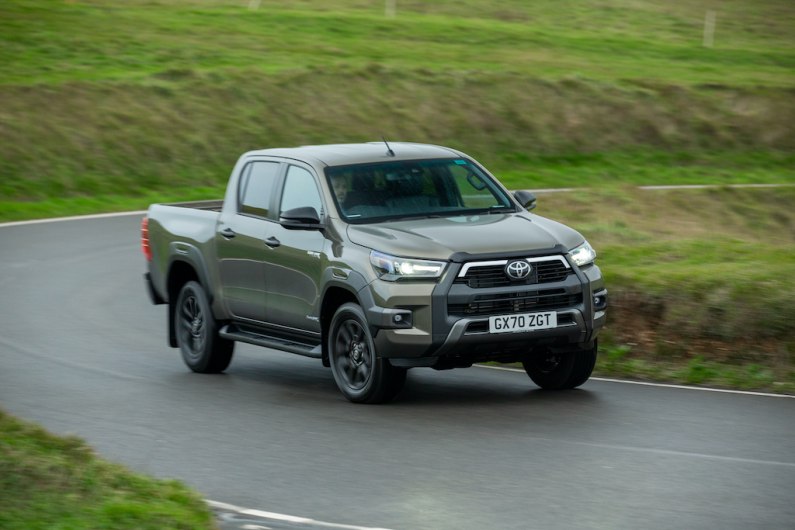
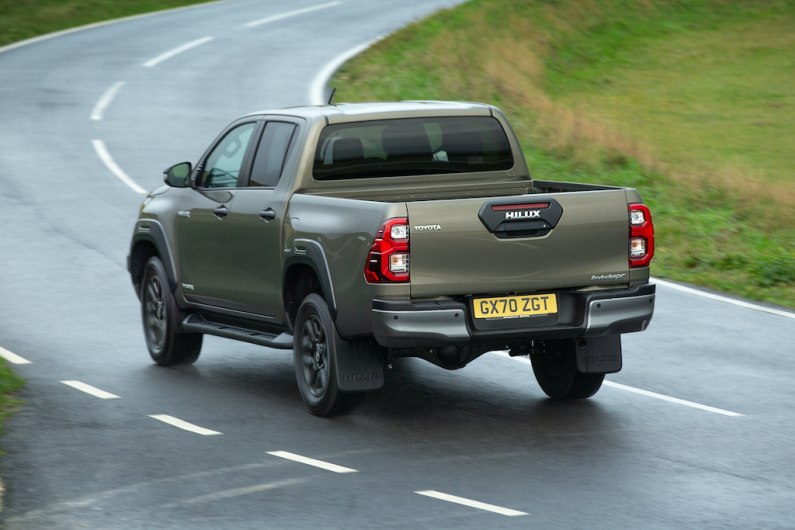
Despite achieving 18 million sales with the Hilux since 1968, Toyota knows that the lifestyle market so far has been its only blind spot. It’s conquered warzones, live volcanoes and, just last year, the Dakar Rally. But it hasn’t yet conquered the sleeve-tattooed personal trainers of Kettering and Watford. But that could be about to change.
The tricky task on Toyota’s hands was to enhance the street cred of the 2021 Hilux without alienating its loyal customer base in places like Eritrea. As you might expect then, from the outside the updates are relatively subtle, retaining the no-nonsense styling of the last model but at the same time giving it a fresher look. There’s a new grille which looks meaner and more aggressive, and some new LEDs on the upper spec models (Invincible and Invincible X), which also get 18-inch alloys. There’s also a new paintjob called Titan Bronze which looks so camouflage-friendly I suspect it will be a big hit with the warlords in failed African states. Sure to be more appealing to the urban British customer is the Scorched Orange, which was previously only available on special edition models.
As before, the cabin can be specced in various forms: single cab for the builders, extra cab for the builders with an apprentice, and double cab for anyone who needs their pickup to act as a car as well as a utility vehicle. Or perhaps just a car. It’s got more than enough room for five people, plenty of storage space and comfortable but hard-wearing seats. The fact it has safety systems like pre-collision assist, adaptive cruise control and lane departure alert all help make the Hilux to all the daily driver you’ll ever need.
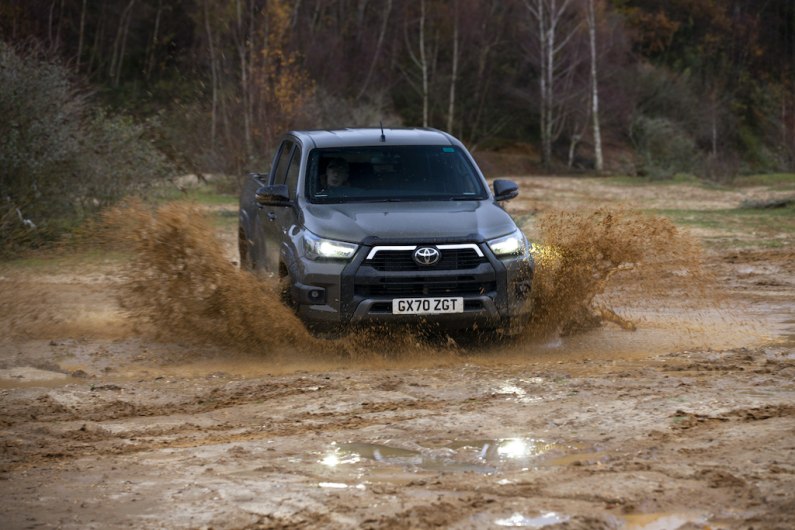
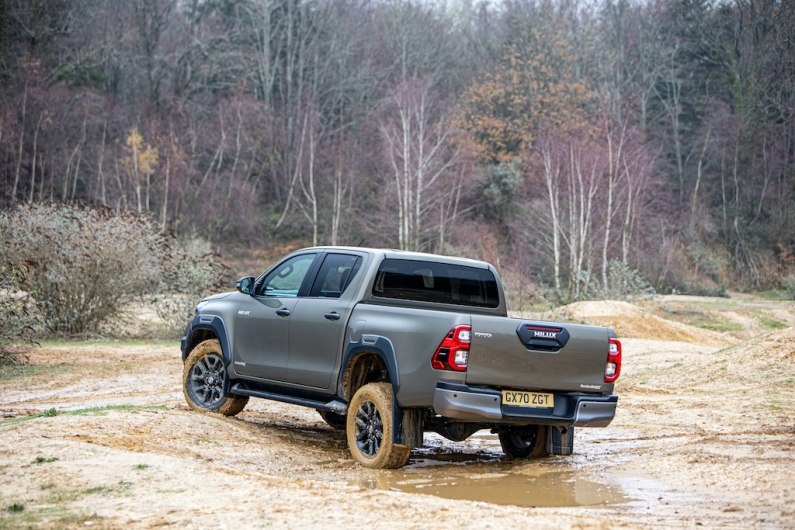
Crucially, all versions of the Hilux other than the Machu Picchu-spec Active model now come with Toyota’s Touch 2 infotainment system. While you shouldn’t expect anything as slick as the system found in the Volkswagen Amarok it’s a vast improvement, not least because it includes smartphone integration for the first time via Apple CarPlay and Android Auto, and if you opt for the Invincible X you’ll get a nine-speak JBL sound system. If that’s not ‘lifestyle’ enough for you then nothing will be.
But a bit of tinsel inside and out isn’t nearly enough to broaden the Hilux’s appeal, which is why for the first time it now comes with the option of a 2.8-litre diesel engine. As a reminder, previously only a 148bhp 2.4-litre lump was available. That’s still on offer for those who want and need it, but the new engine (lifted from the Land Cruiser) is good for a healthy 201bhp and 500Nm of torque. Translated into the figures which matter, the Hilux is faster from 0-62mph by 2.1 seconds with the bigger engine, covering the sprint in 10.7 seconds when mated to the six speed automatic gearbox (a six speed manual is still available).
That puts it bang on par with wagons like the Ford Ranger, but also makes driving the Hilux around town a far less exhausting affair. You no longer have to work it hard to maintain momentum, and your heart rate at roundabouts and junctions is a good 20 beats per minute lower knowing you have the guts to get off the line and down the road before the gap closes. The engine is smooth enough for a pickup, less clattery than the smaller unit and less of a nuisance at idle, with Toyota dropping the idling rpm from 850 to 680.
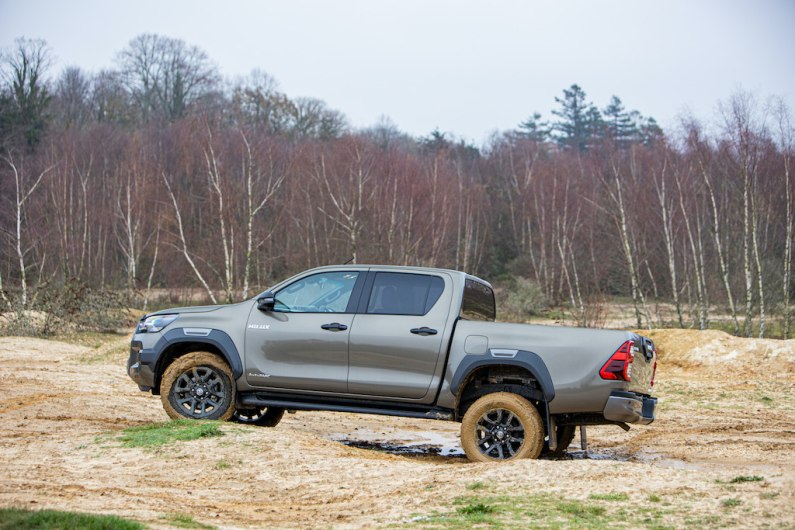
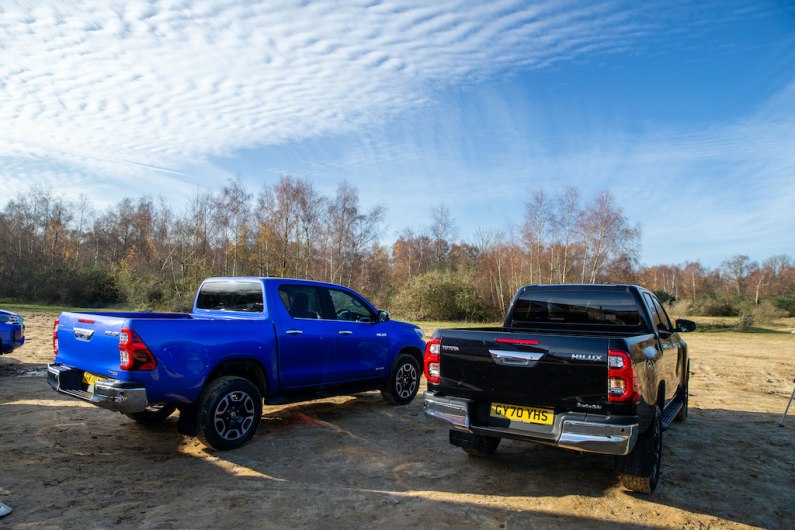
I still don’t love the auto ‘box, it’s sometimes found on the wrong cog and prone to a bit of lag, and while Toyota tells us it’s improved steering response it feels over-lightened at slow speeds, to the point that you wonder if the steering wheel is going to come off in your hands. But once you get used to these idiosyncrasies you realise the Hilux is now actually a very smooth operator in towns and cities.
The last thing I’ll mention regarding the new Hilux’s road performance is the ride quality, which has been improved significantly for the lifestyle customer. You see, unlike the builder, farmer or desert wanderer, the lifestyle customer is likely to be driving their pickup without so much as an empty crisp packet in the load bed. The rear suspension on the previous Hilux was tuned to be best behaved when under load, therefore when the back was empty it was prone to bouncing up and down like a toddler after an espresso. The new model retains the leaf spring setup - it still needs to be able to be patched together in the desert - but it has been re-tuned to reduce vertical movement and take the jolt out of impacts more efficiently. It works, I can tell you that. The ride is far less chattery than the old model’s and the new Hilux really does behave much more like a SUV than ever before.
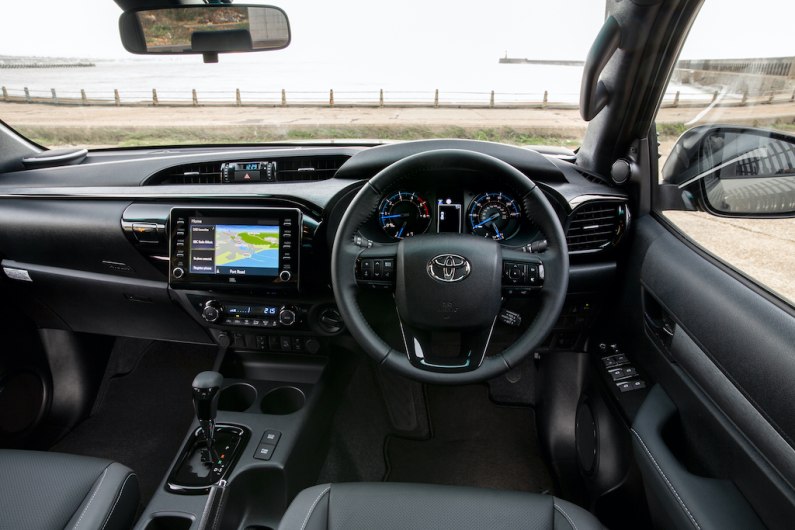
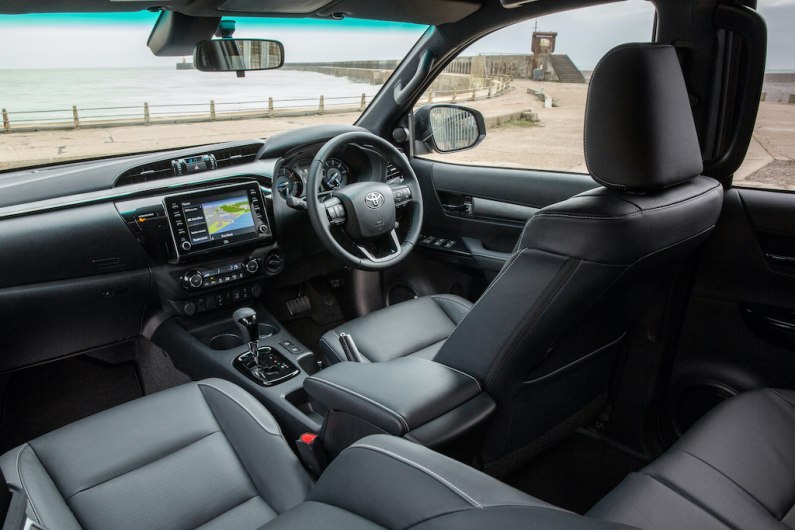
But at what cost? Would it still stand up to Top Gear’s test of dropping a caravan on it and whacking it with a wrecking ball? Funnily enough such activities weren’t on offer during the launch of the 2021 Hilux last week, but Toyota did find some gnarly off-roading courses to throw at it, and even in the hands of an inexperienced off-roader like myself, it made child’s play of bonnet-deep water crossings and military-grade articulation tests. For all its lifestyle-friendly updates, the Hilux still comes with low gear four wheel drive mode, a hill decent mode, the ability to tow 3.5 tonnes and carry at least a tonne in the load bed. It also has a class-leading ground clearance of 310mm, approach and departure angles of 29 degrees and 26 degree respectively and 700mm wading depth.
The 2021 model also features a new slip control function for mildly loose and lairy surfaces, which essentially replicates the function of a limited slip differential by braking the wheel losing grip and sending power to the opposite wheel which has traction. It’s an effective system, and I suspect the very most help a lot of Hilux customers will need. It’s more than enough to deal with boggy building sites or icy backroads.
The new Hilux is still far more utilitarian than most of its rivals, and while it’s a friendlier animal on the road, Toyota has been wise to not to forget where its bread is buttered. I actually don’t think the Ford Ranger or Nissan Navara have to worry too much about losing their market share when it comes to lifestyle buyers, because the Hilux is still far more sober in its looks than both of those models, and it would take a test drive for the average person to realise just how much more of an all-rounder it has become.
But you know what? That’s a good thing. Being tough is better than being fashionable.
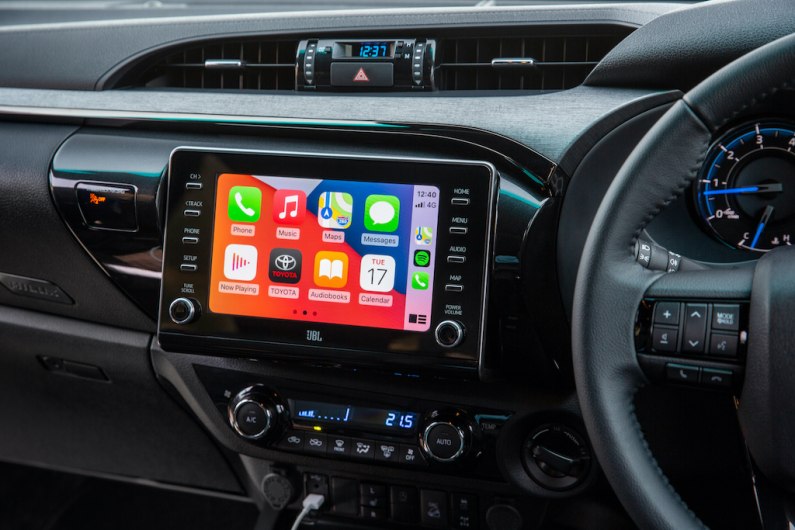
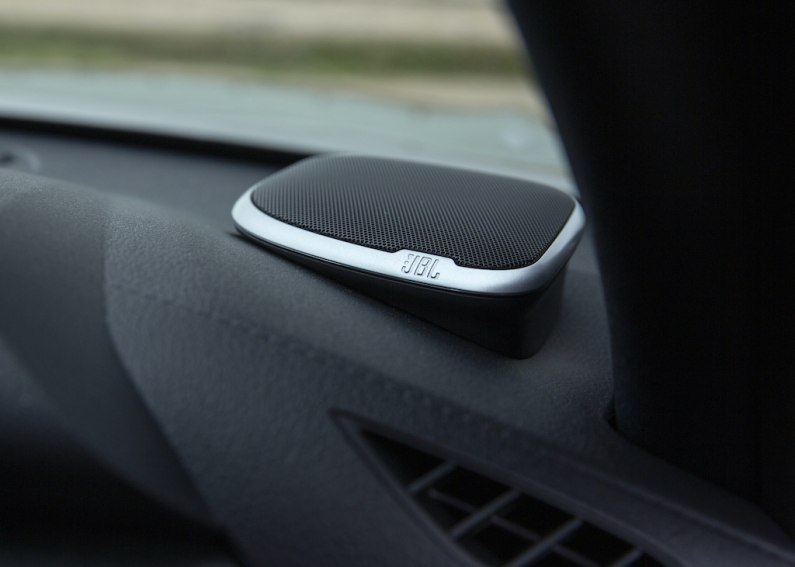
Prices: From £22,466 to £33,783 (with BIK)
Engine: 2.8-litre 4-cylinder diesel
Power: 201bhp/500Nm
0-62mph: 10.7 seconds
Max speed: 109mph
MPG: 32.8
CO2: 224g/km
